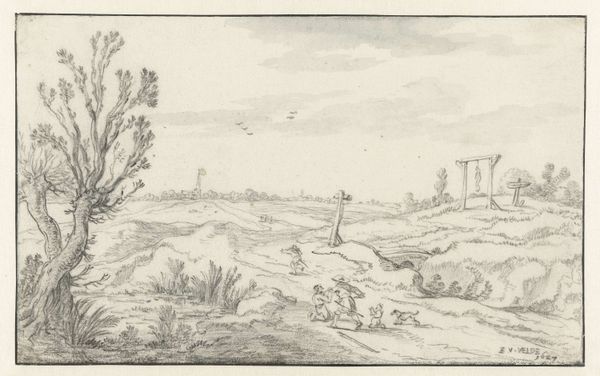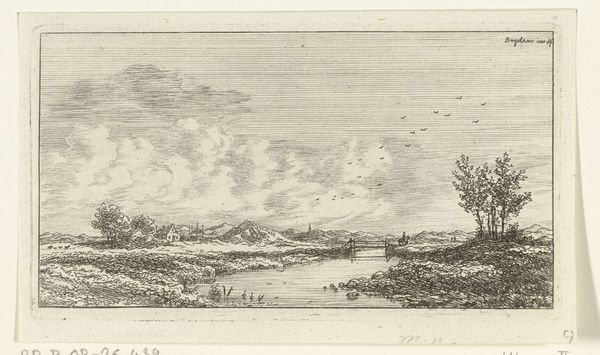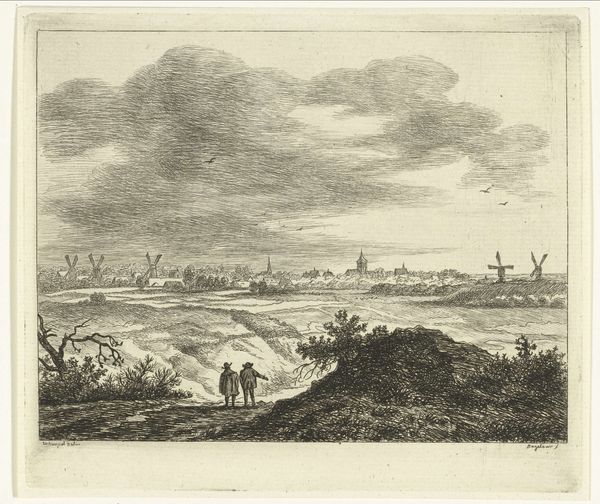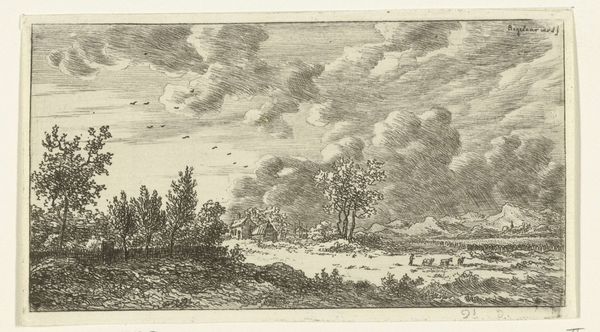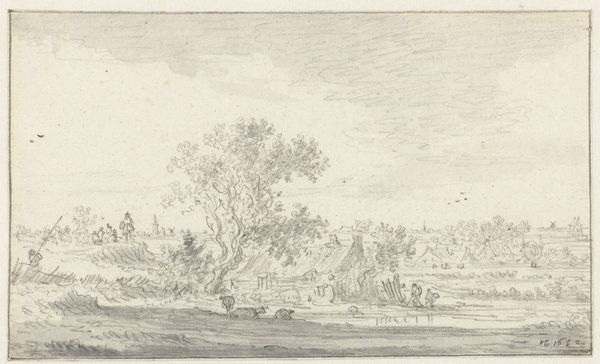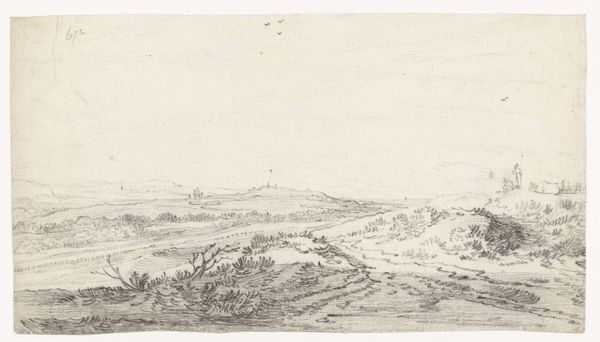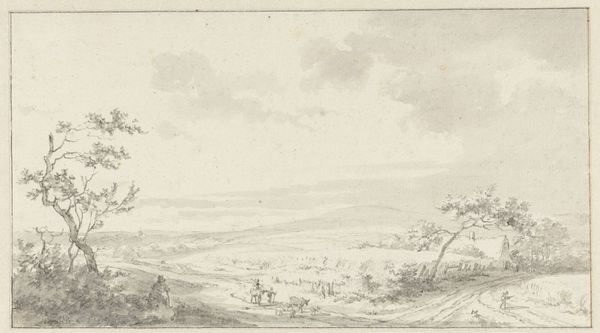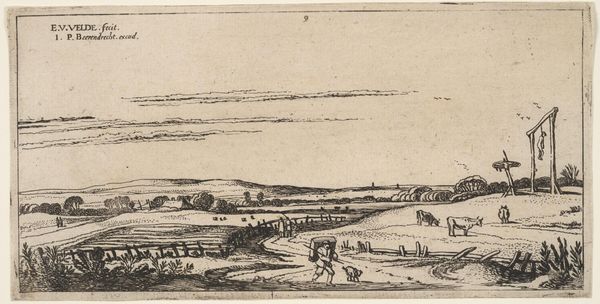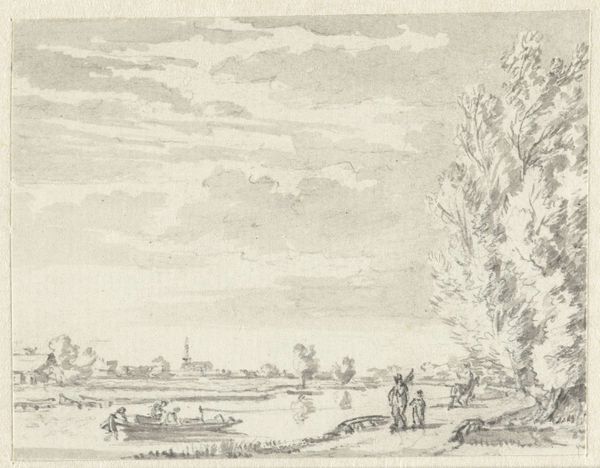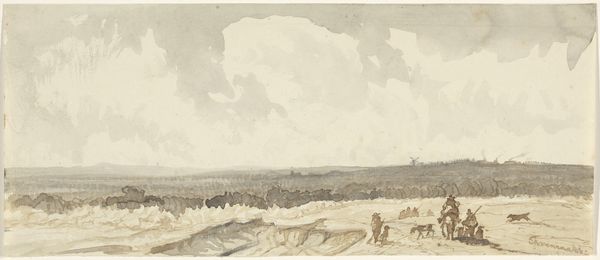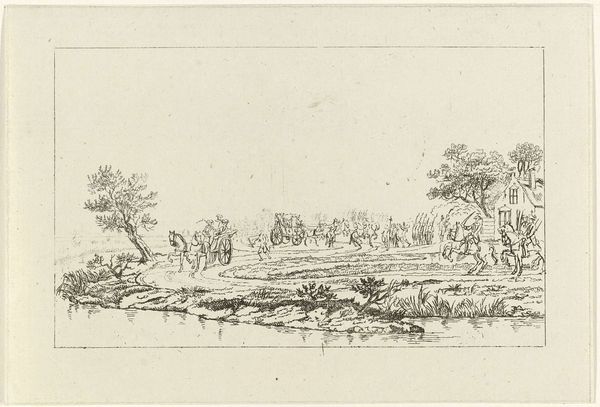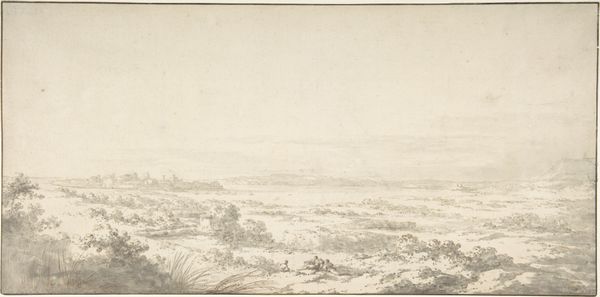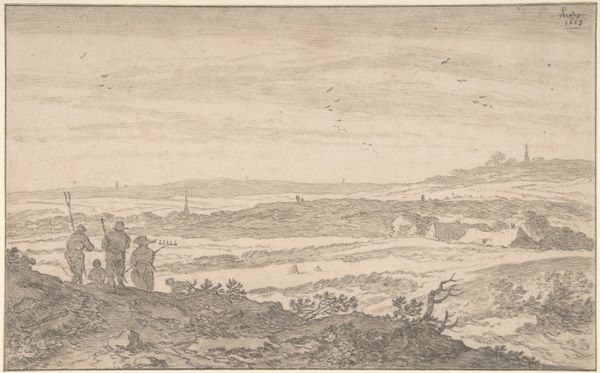
drawing, pencil
#
drawing
#
dutch-golden-age
#
landscape
#
figuration
#
pencil
#
realism
Dimensions: height 115 mm, width 212 mm
Copyright: Rijks Museum: Open Domain
Editor: This is "Landscape with Figures on a Dune" by Jan van Goyen, a pencil drawing from 1653. The light is really beautiful, but the drawing also feels quite… ordinary? What am I missing? What do you see in this piece that I’m not seeing? Curator: It's precisely that sense of the "ordinary" that Van Goyen masterfully captures, offering a glimpse into 17th-century Dutch life. Think about the burgeoning Dutch Republic at the time, newly independent and immensely proud. What do you imagine would appeal to its rising merchant class? Editor: Hmm, not grand historical paintings, I guess. Maybe something closer to home? Curator: Exactly! These landscapes, like this seemingly simple dune scene, became highly sought-after. Van Goyen isn't just depicting a landscape; he's showing the Dutch at work and leisure, a reflection of their new national identity. Notice the figures; they're not romanticized heroes, just ordinary people. And consider the political context: land reclamation was a massive, nation-building endeavor, shaping not only the physical landscape, but the collective Dutch psyche. Editor: So, it's not just a pretty landscape, it's a reflection of Dutch values and their connection to the land? Curator: Precisely. And further, who do you think could afford such pieces at the time, and how did this market drive artists like van Goyen? Editor: That’s fascinating. It makes me see how art is intertwined with social and political realities. Curator: Indeed. And remember, museums and galleries continue to shape the way we see and value such pieces today. Understanding that interplay makes viewing art much richer. Editor: Absolutely, I’ll definitely keep that in mind. Thanks so much!
Comments
No comments
Be the first to comment and join the conversation on the ultimate creative platform.
